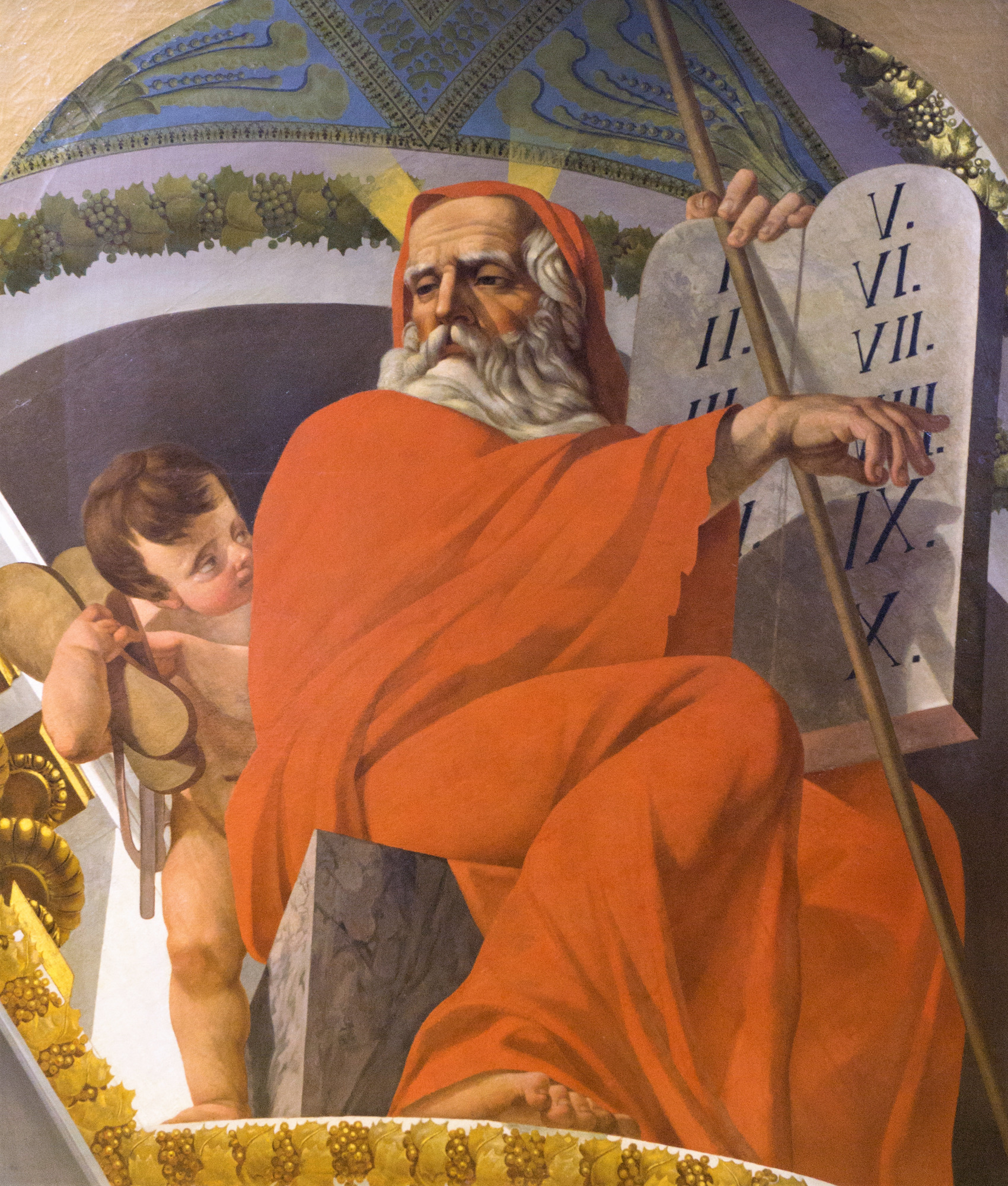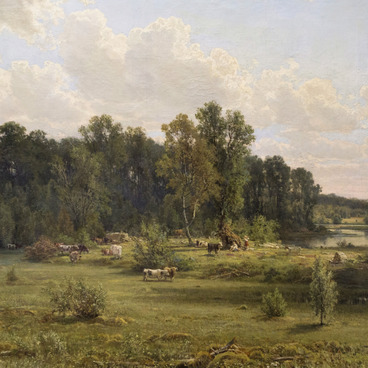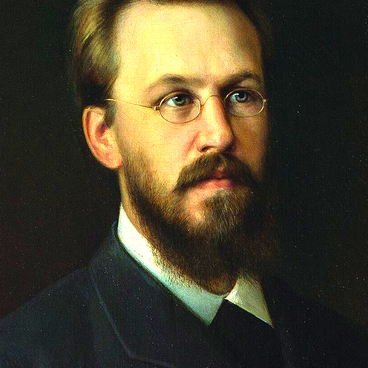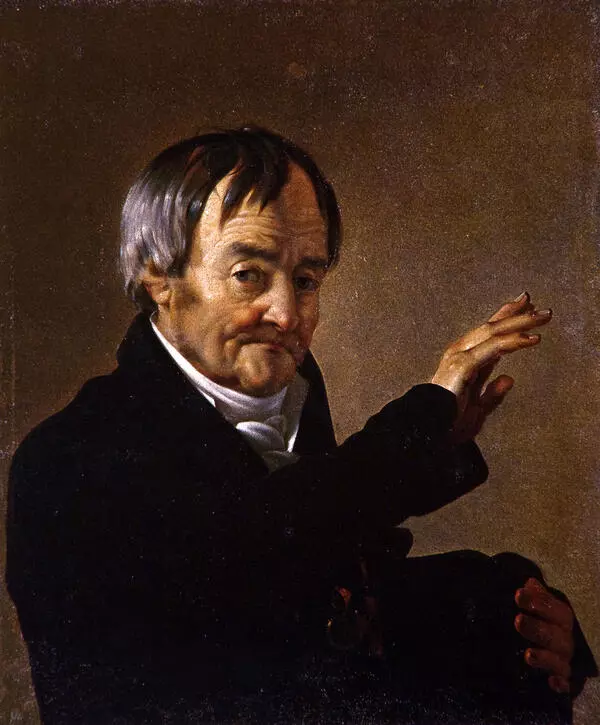‘Moses with the Tables of the Law’ is a painting by the artist, famous for his large-scale paintings, one of the leading masters of late classicism, Vasily Shebuyev. He was born into the family of an official in Kronstadt. His parents noticed the boy’s artistic talent and sent him to the Academy of Arts when he was only five years old. In 1803, after 15 years at the Academy, Shebuyev went to Italy, where he studied the basics of monumental painting by looking at famous paintings. Having returned to Russia, the artist was awarded the title of academician, and later he received the title of professor. In 1832, Shebuyev became Rector of Painting and Sculpture. Among the artist’s monumental works is the design of the interiors of the Engineers’ Castle and the Kazan Cathedral in St. Petersburg.
In the painting “Moses with the Tables of the Law” the artist depicted an Old Testament prophet who God gave the tablets with the Ten Commandments on Mount Sinai. This is a sketch for a plafond — a ceiling painting — of the inner church of the Catherine Palace in Tsarskoe Selo. The consecration of the temple took place in 1756 in the presence of Empress Elizabeth Petrovna. In 1820, a big fire broke out, which destroyed the decoration of the palace, including the ceiling painting of the famous 18th-century master Giuseppe Valeriani. Professor Vasily Shebuyev was given the honor to recreate this painting. Before taking up the work, he made several preparatory sketches, among them was “Moses with the Tables of the Law” from the collection of the Irkutsk Art Museum.
The artist painted Moses in the plafond in the left corner, right above the iconostasis. The painting has not survived — the palace was destroyed and plundered by the Nazis during the Great Patriotic War. However, the sketch that was in the funds of the Hermitage museum survived. Vera Kruglova, a Moscow art critic, wrote, “The study provides a vivid picture of the painting on the plafond that has not survived. The color scheme of the study, painted in broad brush strokes, is built on the combination of large spots of bright tones. Against the background of blue and white vaults with a little gold… the mighty figure of Moses stands out in a bright red tunic, his large head is depicted with scattered silver hair and beard.”
The work entered the museum in 1928 from the funds of the Hermitage.
In the painting “Moses with the Tables of the Law” the artist depicted an Old Testament prophet who God gave the tablets with the Ten Commandments on Mount Sinai. This is a sketch for a plafond — a ceiling painting — of the inner church of the Catherine Palace in Tsarskoe Selo. The consecration of the temple took place in 1756 in the presence of Empress Elizabeth Petrovna. In 1820, a big fire broke out, which destroyed the decoration of the palace, including the ceiling painting of the famous 18th-century master Giuseppe Valeriani. Professor Vasily Shebuyev was given the honor to recreate this painting. Before taking up the work, he made several preparatory sketches, among them was “Moses with the Tables of the Law” from the collection of the Irkutsk Art Museum.
The artist painted Moses in the plafond in the left corner, right above the iconostasis. The painting has not survived — the palace was destroyed and plundered by the Nazis during the Great Patriotic War. However, the sketch that was in the funds of the Hermitage museum survived. Vera Kruglova, a Moscow art critic, wrote, “The study provides a vivid picture of the painting on the plafond that has not survived. The color scheme of the study, painted in broad brush strokes, is built on the combination of large spots of bright tones. Against the background of blue and white vaults with a little gold… the mighty figure of Moses stands out in a bright red tunic, his large head is depicted with scattered silver hair and beard.”
The work entered the museum in 1928 from the funds of the Hermitage.




